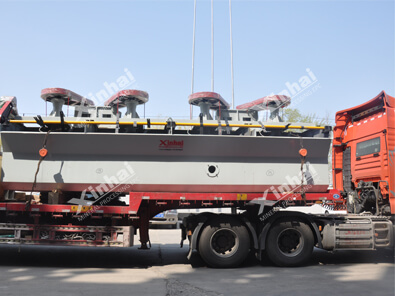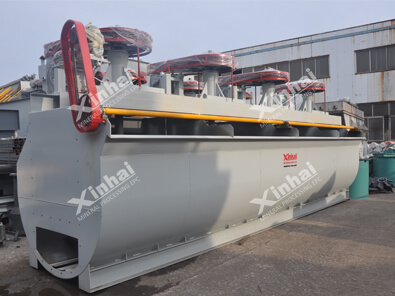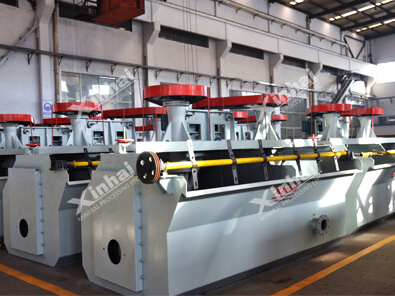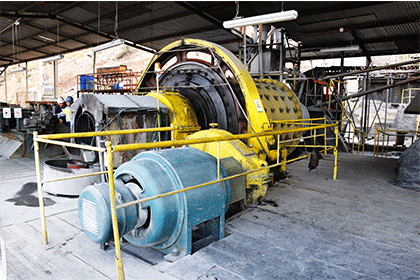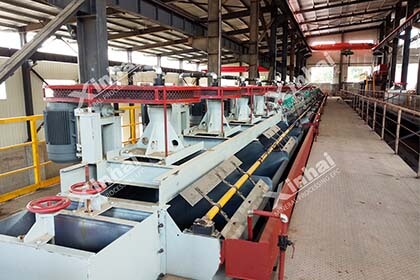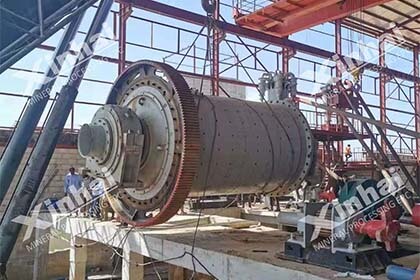How to Extract Lead and Zinc From ore?
 Shirley
Shirley
 Aug 23, 2022
Aug 23, 2022
 1002
1002
If you want to know more details about equipment, solutions, etc, please click the button below for free consultation, or leave your requirements!

(Lead-zinc processing line)
Lead and zinc minerals are closely associated with each other in the primary deposits and have similar properties, which are difficult to be separated by simple gravity separation and magnetic separation processes. Therefore, it adopts flotation process as the main lead-zinc mineral processing solution. Different types of lead-zinc mineral, different flotation processes, mainly including differential flotation process, full mixed flotation process, partial mixed flotation process and iso-flotation process.
01 Lead and Zinc Extraction Solutions
Back(1) Lead-zinc differential flotation process
Differential flotation process means to float one mineral and inhibit other minerals, then activate and float the second mineral, inhibit the rest of minerals. It often adopts this process to deal with lead-zinc-sulfur type ores, that is, lead flotation, followed by zinc and sulfur in principle.
(2) Lead-zinc full mixed flotation process
This process is used for polymetallic ore in which the useful minerals are unevenly disseminated or densely co-existed with each other, or one useful mineral is finely disseminated in another mineral, and its intergrowth body is coarsely disseminated in gangue. In this flotation process, the copper, lead and zinc minerals are firstly floated to the mixed concentrate, then the mixed concentrate is separated after detoxification, so as to get copper concentrate, lead concentrate and zinc concentrate.

(3) Lead-zinc partial mixed flotation process
It separates two useful minerals with similar floatability into the mixed concentrate, and then floats, that is, the copper sulfide, lead ore with similar floatability are selected as mixed concentrate, then the copper and lead are separated, flotation copper and lead tailings are reactivated to float the zinc concentrate. This flotation process is suitable for copper-lead-zinc polymetallic sulfide ores with similar floatability.
(4) Lead-zinc iso-flotation process
Following the separation principle of "easy first, difficult later", it divides the recoverable mineral into easy-to-float and difficult-to-float two parts according to the difference of natural floatability, and obtains the mixed concentrate through respectively mixed flotation, then successively separates copper, lead, zinc concentrate. This flotation process is suitable for the complex polymetallic ore with easy-to-float and difficult-to-float two parts, which can reduce the reagent consumption and benefit the flotation index.

02 Lead and Zinc Extraction Cases
Back(1) Inner Mongolia 2,000TPD Lead-Zinc Mining and Processing Plant
The project was a lead-zinc mineral mining and beneficiation plant undertook by Xinhai. The metal minerals in the raw ore included galena, sphalerite, chalcopyrite, argentite, magnetite, limonite and covellite. The gangue minerals included volcanic breccia, tuffaceous, secondary quartz, chlorite. Finally, crushing+ grinding + flotation + concentrate dewatering process was used in this plant.
(2) Armenia 1,500TPD Copper-Lead-Zinc Processing Plant
The ore of this project was carbonate type deposit, and the main metal minerals were galena and sphalerite. The gangue mineral was diopside. The grade of raw ore was 5.61g/t, the lead concentrate with recovery rate of 90.49% was obtained by adopting two-stage closed-circuit crushing-one-stage self-grinding, regrinding of coarse lead concentrate, preferential flotation- two-stage dewatering process.

(3) Mexico 1,500TPD Copper-Lead-Zinc-Gold and Silver Processing Plant
The Mexico 1500TPD copper-lead-zinc-gold and silver mineral processing plant was an EPC+M+O project. Xinhai conducted the design and research, complete equipment manufacturing and procurement, commissioning and delivery, mine management and operation. Finally, the ideal processing indexes were obtained by adopting the differential flotation process.

(4) Inner Mongolia 1,200TPD Lead-Zinc Processing Plant
Two and a half-stage closed-circuit crushing and screening + three-stage closed-circuit grinding + lead flotation + zinc flotation + sulfur flotation + lead and zinc concentrate dewatering was adopted in this project, and the final products were lead concentrate and zinc concentrate with good indicators.
(5) Iran 500tpd Lead-Zinc Flotation Plant
The raw ore of this project contained 3.68% of lead, 2.85% of lead in lead oxide, and 77.45% of lead oxidation; 16.06% of zinc, 15.93% of zinc in zinc oxide, and 99.20% of zinc oxidation, which was a refractory polymetallic ore. The main metal minerals were galena, white lead, sphalerite, hemimorphite, siderite, pyrite, limonite, hematite, and silverite. The main non-metallic minerals were quartz, feldspar, hornblende, chlorite. Through the differential flotation process (lead flotation first and zinc flotation later, the lead concentrate with a grade of 41.03%and zinc concentrate with a grade of 42.85% were obtained respectively.

(6) Tibet 1,500tpd Lead-Zinc Tailings Dry Stacking Plant
Flotation tailings were transported to the rubber pump box of the dry drainage workshop by self-flow or pumped, and pumped into the concentrated hydrocyclone group. The underflow of the cyclone flowed by itself to the dewatering screen, and the dewatering screen was transported out of the workshop for storage by belt, and the under screen was transported to the thickener by pump. The overflow of the cyclone flowed to the thickener. After being concentrated, it was driven into the filter press with the feed pump of the filter press to form a filter cake, which was transported out of the workshop with a belt for storage, and the filter press filtrate and the dewatering screen filtrate flowed to the filtrate. The buffer tank was then pumped to the thickener, the overflow of the thickener flowed to the return pool by itself, and after clarification, it was transported back to the processing plant by a return pump.

(7) Bulgaria 200TPD Lead Tailings Dry Stacking Plant
The original concentrator adopted wet tailings discharging. Before dry stacking, the pulp contained 50% of water, sometimes even 80%. When the pulp contained 50%-65% water, it can be directly sent to the buffer tank and then pumped into the filter press for dehydration. When the water content was 65~80%, it must be pumped into the thickener for concentration, and then sent to the filter press for dehydration. The tailings dry stacking process in this project was simple and reliable, the water content of dry tailings was reduced to less than 15%.
03To Wrap Up
BackThe above introduces how to extract lead and zinc from and shares some lead and zinc processing plant cases. Before we also talked about copper ore processing solutions and equipment. If you have other questions, you can contact our online service or submit your message, we will contact you soon.
 +86 18716000713
+86 18716000713 xlyin@xinhaimining.net
xlyin@xinhaimining.net




 Message
Message Chat Now
Chat Now


